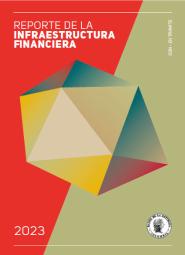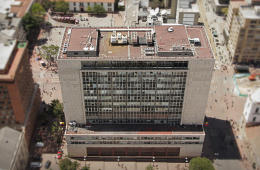BanRep Minutes: The Board of Directors of Banco de la República voted by a majority to reduce the policy rate by 50 basis points to 11.25%
- Annual inflation remained unchanged in May at 7.2%, while core inflation (excluding food or regulated items) fell from 6.4% to 6.1%. Annual food inflation was slightly higher than expected, increasing from 3% to 4.4%, owing to a rebound in the prices of some perishable foods whose impact from the El Niño phenomenon was more significant than anticipated. Nevertheless, inflation fell for the all sub-baskets of the Consumer Price Index (CPI) except food.
- According to the Bank’s monthly survey of economic analyst expectations performed in June, inflation expectations showed a decrease versus May readings. Results for one-year expectations for the sample median fell from 4.6% to 4.3% versus May, while yearend 2025 expectations remained stable at 3.8%. Inflation expectations obtained from the public debt market stood relatively unchanged, suggesting a downward trajectory over the policy horizon yet continuing above the target until the end of 2025.
- The 0.9% annual GDP growth experienced in the first quarter exceeded the technical staff’s more conservative 0.3% forecast. During this period, net external demand was the primary driver of annual GDP growth due to the annual fall in imports and growth in exports. Second quarter results appear to point towards a recovery path for the economy according to indicators such as the economic tracking indicator (ISE) and other high-frequency indicators, including consumer credit disbursements, electronic payments, monthly exports and imports, regional pulse, cargo transport, and air passenger traffic.
- The country’s risk premium and the peso to US dollar exchange rate remained high over the past weeks mainly as a result of uncertainty regarding the inflation behavior in the United States and the Federal Reserve’s management of the interest rate, placing pressure on international financial markets and contributing to the strengthening of the US dollar worldwide. Domestically, amid a challenging backdrop for medium-term fiscal sustainability, the National Government announced a welcome public spending adjustment and commitment to comply with the fiscal rules.
All Board of Directors members agree to continue with the process of decreasing the policy rate initiated last December, consistent with the downward trend annual inflation has upheld since April 2023. The directors agree that the restrictive monetary policy stance has fulfilled its objective of reducing excess spending in the economy, which, exacerbated by the multiple and persistent supply shocks that occurred since the pandemic, unleashed the strongest inflationary spiral the country has undergone since the adoption of the target inflation policy at the end of 1999. However, Board members continue to differ on the magnitude of said rate cuts they consider appropriate to bring inflation to target. This divide is mainly explained by the different weights Board members attach to the risks involved and the varying preferences concerning the particulars of the adjustment process. Nevertheless, all directors welcome the government’s recent fiscal efforts demonstrating a notable spending adjustment versus the behavior of 2023. At the recent meeting, four directors voted for a 50-basis point reduction in the policy rate, and two voted for a 75-basis point cut.
The majority of directors that voted for a 50 bp decrease emphasized that this decision upholds the significant rate cut pace of the previous two Board sessions, positively reflected in the stability of inflation and inflation expectations seen in May and a similar decrease in the real interest rate, both ex-ante and ex-post. They consider that a steeper decline in the interest rate path is not sustainable over time, given the residual risks present to ensure the convergence of annual inflation to the target during the period anticipated by the Board. Among these risks, they highlight the downward stickiness of inflation in some services, including housing leases and electricity rates, and the peso’s depreciation against the US dollar in recent weeks. They underscore the risk surrounding food price inflation, which rebounded in May. In addition, they warn that while inflation expectations display a downward trend over time, they remain above the target for the relevant timeframe in which the Board aims to achieve its convergence to target.
The Board members who voted for a 75 bp reduction agree with the majority in recognizing the risks that continue for the inflation path to converge to the target. However, they believe some to be more subdued. In the case of electricity rates, they emphasize that the risk of power outages has dissipated as hydro generation has been increasing and new solar plants are coming online. They note the upcoming rate option through which the government will assume the debt with the energy companies on the Atlantic coast for consumers in socioeconomic strata 1, 2, and 3. They also point out that many mechanisms for price indexing to the minimum wage have been eliminated since yearend 2022. On the other hand, these directors insist that the contractionary monetary policy has successfully reduced excess demand, and its snowballing effect will continue to bring inflation to the 3% target. They underscore that the 0.6% growth seen in 2023 fell below the most conservative forecasts, and the slowdown in consumption and the decrease in investment by more than 25% resulted in a significant correction of the current account deficit. They add that GDP data for the first quarter of 2024 showed domestic demand continued to negatively impact economic activity as household consumption fell (-0.1%) along with investment (-14.6%). Under these circumstances, they consider it essential to implement a less restrictive monetary policy through more significant rate cuts to drive investment recovery and, concurrently, enhance the prospects of growth closer to its potential in the coming years. They emphasize that Colombia’s investment rate fell from 23.4% of GDP in 2015 to its 18% rate, which places it at a level well below that of peer countries such as Mexico (24.7%), Peru (24%), and Chile (23.8%).
The monetary policy decision adopted by the Board of Directors continues to support a stance seeking to drive inflation to its target by mid-2025, while providing a boost to further economic growth recovery. The Board of Directors underscored that future decisions will be determined based on new information available.
__________________________________________________________________
*One director was absent for legitimate reasons.

















































